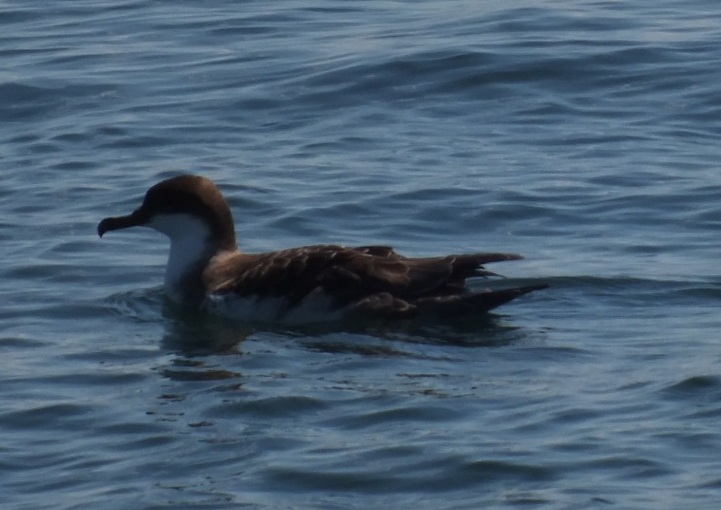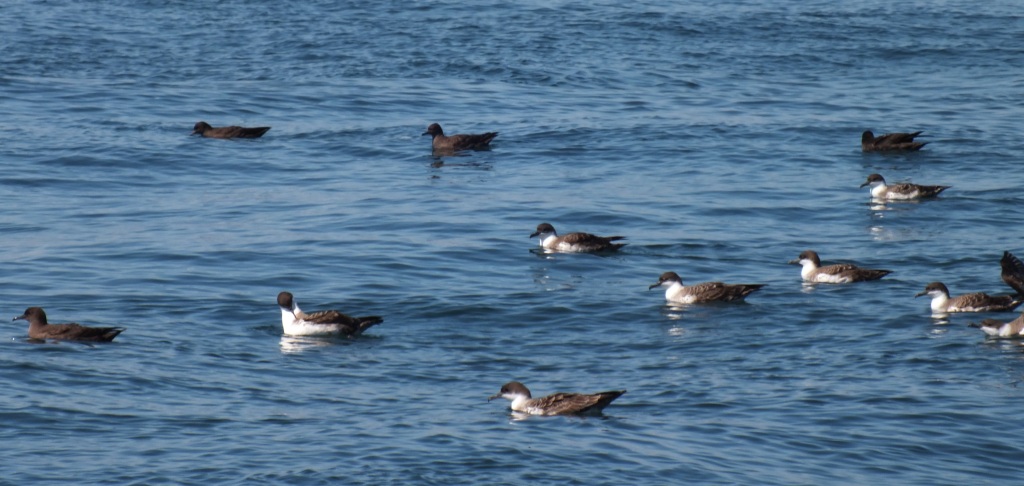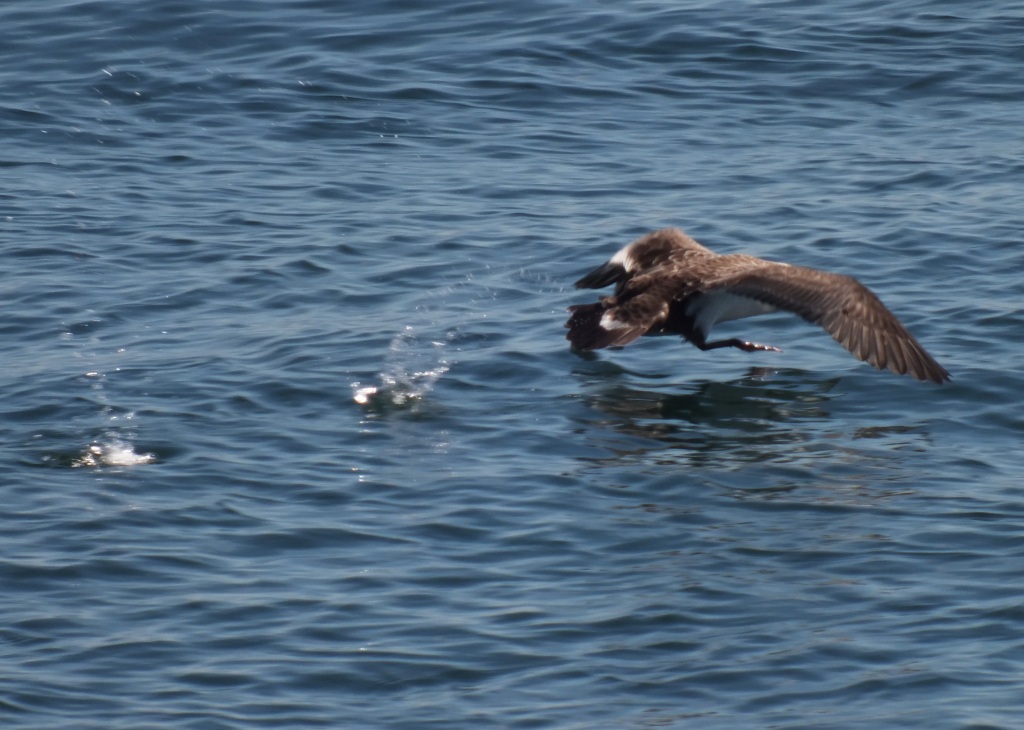(Late Entry)
The Strait of Belle Isle is the channel that separates the northern tip of Newfoundland from the southern end of Labrador. It is a magical place, rich in plankton which draws fish, seabirds and whales in large numbers. I just finished a 3-week stint of counting seabirds from a Coast Guard research vessel off the east coast of Newfoundland and Labrador and I spent a couple of days in the area. It’s a great place to see Sooty Shearwaters; I’ve seen hundreds in the Strait itself. Great Shearwaters are also common but even more so a little further out to sea.
But this richness pales in light of descriptions made in earlier times. In the early 1900’s, Arthur Cleveland Bent published a series of books detailing the life histories of all North American birds – the Birds of North America is a more modern version of his pioneering initiative. He did most of the writing but, on occasion, had other experts pen the histories of particular species. I love the “old” writings: so much more descriptive (not the cold, formal detailing of modern scientific writing) and with a wide vocabulary.
CW Townsend did the write-up on the Greater Shearwater. “To the bird student who rarely ventures from the beaches or sheltered bays out onto the unprotected ocean a glimpse of a shearwater – the hag, or hagdon, or hagdown of sailors – is most unusual…..Graceful birds they are and well do they deserve their name, for on nimble wing they are ever on the alert to cut or shear the water in their search for food.”
I was particularly struck by this description:
“The largest number I ever saw was on a July day on the Labrador coast between Battle and Spear Harbors. The wind was strong on shore, bringing in wisps and clouds of fog from the numerous icebergs which beset the coast. At first our steamer disturbed from the water groups of fifty to a hundred shearwaters, but, as we pushed north, larger and larger flocks arose and flew outside until we had seen at least ten thousand (italics mine) of these splendid birds. The great flock extended for several miles along the rugged coast and with the exception of three sooty shearwaters all were the greater species.”
Battle Harbour is just north up the Labrador coast from the Strait of Belle Isle. I steamed through the general area 3 times on this trip. I saw very few Great Shearwaters. There were some around but nothing even approaching these numbers – mostly single birds coursing back and forth across the swell looking for a meal.
Further south I had seen Great Shearwaters in groups, especially when we ran 450 nautical miles East along the 47th parallel over the Flemish Cap and then north to a transect that would take us southwest into Bonavista Bay. I saw isolated groups of 30-50 birds on the water and once, when the ship was stopped to take water samples, a group of about 125 gathered around the ship (mistaking us for a fishing vessel). But at no time over the 3 weeks I was out did I ever see Great Shearwaters in the numbers described above. (And, interestingly, in the Strait of Belle Isle area the most common shearwater was the Sooty.)
Great (and Sooty) Shearwaters nest on islands in the far southern Atlantic. After nesting they head north to spend “the Winter” in the nutrient-rich waters of the north Atlantic. Traditionally they seek out schools of small fish (like capelin) and squid to sustain them and, especially, to fuel their moult. They arrive in eastern Canadian waters by May and usually have left by sometime in October. They range well up the Labrador coast and I have seen them as far north as the SE end of Baffin Island.
So, did I just miss them or are they not there anymore? I suspect the latter. Recent reports, including The State of the World’s Birds, suggest that, worldwide, seabird numbers have declined by 70% since the 1950’s. While I find these kinds of numbers suspect (because I don’t know what they’re based on – who was systematically counting in the 1950’s?), I don’t doubt that there has been a serious drop. Why? Well I guess you can run through the usual litany of suspects: overfishing of prey species, by-catch in the fishing industry (i.e., hooked on long-lines and drowned), chemical pollution, predators finding their way into their breeding areas (e.g, cats and rats brought by fishing/whaling vessels), changes in oceanic current flows and water temperatures due to global warming, ingestion of pieces of plastic floating in the oceans (and I saw some even though we were fairly far north). More likely it isn’t one of these causes but the cumulative effect of them all working together insidiously. What a shame. A single Great Shearwater playing in a 30-knot wind over the waves or riding the updraft of a long swell is a thing of beauty and awe. I can’t begin to imagine what ten thousand of them would be like.



